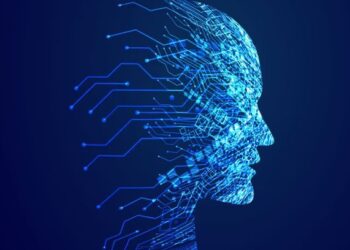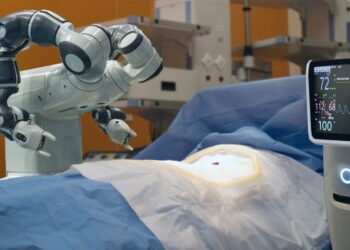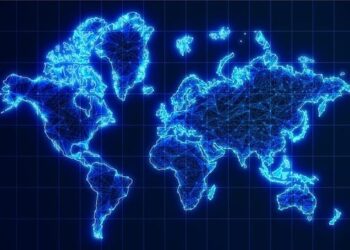The pastoral image of a farmer surveying vast fields, relying solely on instinct and generations of passed-down wisdom, is being repainted with strokes of data, automation, and artificial intelligence. We are in the midst of a profound transformation, an era where agriculture is converging with cutting-edge technology to create a more efficient, sustainable, and productive global food system. This is not merely an upgrade of tools; it is the Digital Revolution in Agriculture, a fundamental reshaping of how we grow, manage, and distribute food.
For centuries, farming has been an art of approximation. But in a world with a burgeoning population set to exceed 9 billion by 2050 and increasing pressure on natural resources, approximation is a luxury we can no longer afford. The challenges are immense: climate change, water scarcity, soil degradation, and the need to produce more food on less land. The solution lies not in working harder, but in working smarter. Digital agriculture, or “AgriTech,” is the answer to this complex equation. It leverages a powerful suite of technologies—from GPS-guided tractors and soil-sensing drones to AI-powered predictive analytics—to bring scientific precision to every aspect of the farming operation.
This article delves deep into the core of this revolution. We will explore the key technologies driving this change, understand their practical applications on the ground, and analyze the immense benefits they bring to farmers, consumers, and the planet. We will also address the challenges and look ahead to the future of a farm that is as much a data center as it is a field of crops. This is the story of how silicon and soil are coming together to cultivate the future.
The Core Technologies Forging the New Face of Farming
The digital farm is a complex ecosystem of interconnected technologies working in unison. Each component plays a vital role in collecting data, generating insights, and enabling precise, automated actions. Understanding these pillars is key to grasping the scale of this agricultural evolution.
A. Precision Agriculture: The Foundation of Smart Farming
Precision agriculture is the conceptual heart of the AgriTech revolution. It’s a management strategy that uses informational technology to collect and analyze data from the field, allowing farmers to manage variations within their land with pinpoint accuracy. Instead of treating an entire field as a uniform entity, farmers can now address the specific needs of individual sections, or even individual plants.
- Global Positioning System (GPS) and Geographic Information Systems (GIS): The revolution began here. GPS guidance systems allow for incredible precision in tractor and equipment operation. This enables practices like autosteering, which reduces fuel consumption and operator fatigue, and ensures perfect lines for planting, spraying, and harvesting, minimizing overlap and waste. GIS software then layers this location data with other information (like soil type or yield history) to create detailed, interactive farm maps that are essential for planning and decision-making.
- Variable Rate Technology (VRT): Working hand-in-hand with GPS and GIS maps, VRT allows farm machinery to automatically adjust the rate at which it applies inputs like seeds, fertilizer, and pesticides. A VRT-equipped seeder might plant more densely in highly fertile soil zones and less densely in poorer areas. Similarly, a sprayer can apply more fertilizer to nutrient-deficient patches while reducing application elsewhere, optimizing input use, cutting costs, and drastically reducing environmental runoff.
B. The Internet of Things (IoT): Creating a Connected Farm
The Internet of Things refers to the vast network of physical devices embedded with sensors, software, and other technologies that connect and exchange data over the internet. In agriculture, IoT is creating a truly “sentient” farm that provides a constant stream of real-time information.
- In-Field Sensors: The fields are now alive with data. IoT sensors can monitor a vast array of crucial variables. Soil sensors measure moisture levels, temperature, and nutrient content, allowing for highly efficient irrigation and fertilization. Instead of watering on a fixed schedule, farmers can irrigate only when and where it’s needed, conserving billions of gallons of water.
- Livestock Monitoring: IoT isn’t limited to crops. Wearable sensors on livestock can track animal health, location, and behavior. These devices can monitor vital signs, detect early signs of illness, and even identify when an animal is in heat, optimizing breeding programs. This leads to healthier herds, reduced veterinary costs, and improved animal welfare.
- Smart Weather Stations: Hyper-local weather stations on the farm provide real-time data on rainfall, wind speed, and humidity with far greater accuracy than regional forecasts. This data feeds into farm management software, helping farmers make critical decisions about when to plant, spray, or harvest.
C. Drones and Aerial Imagery: The Farmer’s Eye in the Sky
Unmanned Aerial Vehicles (UAVs), or drones, have transitioned from a niche hobby to an indispensable agricultural tool. Equipped with advanced cameras and sensors, they provide an aerial perspective that was previously unimaginable or prohibitively expensive.
- Crop Health Monitoring: Drones equipped with multispectral or hyperspectral sensors can capture imagery that goes beyond what the human eye can see. They can identify plant stress caused by pests, diseases, or nutrient deficiencies long before it becomes visually apparent. This allows for early, targeted intervention, preventing crop loss and reducing the need for broad-spectrum pesticide application.
- Precision Spraying and Seeding: Larger, more robust drones are now capable of carrying payloads. This enables highly targeted spot-spraying of pesticides or herbicides directly onto affected areas, minimizing chemical use and environmental impact. Drones are also being used for cover crop seeding in hard-to-reach areas.
- Field Mapping and Analysis: Drones can quickly survey hundreds of acres, creating high-resolution 3D maps of the terrain. This is invaluable for planning irrigation systems, assessing soil erosion, and even counting plants to estimate yield potential with remarkable accuracy.
D. Artificial Intelligence (AI) and Big Data: From Data to Decisions
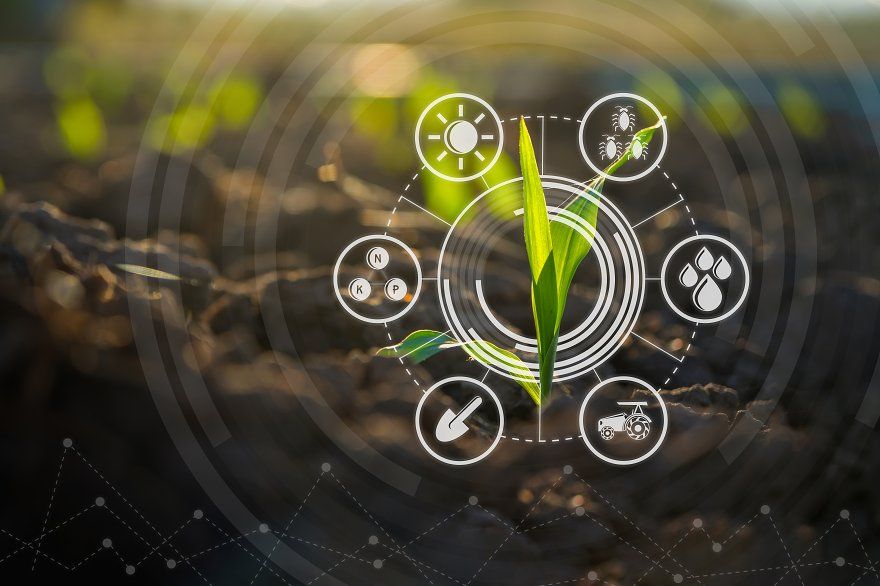
If IoT sensors and drones are the nervous system of the digital farm, then AI and Big Data analytics are its brain. The sheer volume of data collected from these devices is overwhelming. AI is the key that unlocks its value, transforming raw data points into actionable intelligence.
- Predictive Analytics: AI algorithms can analyze historical data, real-time sensor readings, and weather forecasts to predict future outcomes. This includes forecasting crop yields, predicting disease or pest outbreaks, and determining the optimal time for harvest. This foresight allows farmers to move from a reactive to a proactive management style.
- Agricultural Robotics: AI is the driving force behind the next generation of farm robots. Autonomous machines are being developed to handle labor-intensive tasks like weeding, fruit picking, and thinning. These “agbots” can work 24/7, identify and eliminate individual weeds without herbicides, and gently harvest delicate produce, addressing labor shortages and improving efficiency.
- Supply Chain Optimization: AI is also revolutionizing the journey from farm to table. By analyzing market demand, transportation logistics, and storage conditions, AI can help optimize the entire supply chain, reducing food waste and ensuring fresher produce for consumers. Blockchain technology, an immutable digital ledger, is also being integrated to provide unprecedented transparency, allowing consumers to trace their food right back to the very field it was grown in.
The Tangible Benefits of the Digital Transformation
The adoption of these technologies is not just about modernization for its own sake. It delivers powerful, measurable benefits that impact profitability, sustainability, and global food security.
- Increased Productivity and Yield: By optimizing every input and addressing crop needs with precision, smart farming significantly boosts yield per acre.
- Enhanced Sustainability: VRT, precision irrigation, and spot-spraying drastically reduce the use of fertilizers, pesticides, and water. This not only cuts costs but also protects local ecosystems and reduces agriculture’s carbon footprint.
- Improved Decision-Making: Data-driven insights replace guesswork. Farmers can make more informed, strategic decisions that lead to better financial outcomes and greater operational resilience.
- Reduced Operational Costs: While there is an initial investment, the long-term savings on fuel, water, seeds, and fertilizer are substantial, leading to improved profitability.
- Greater Food Safety and Transparency: Technologies like blockchain enhance traceability throughout the supply chain, increasing consumer trust and allowing for rapid response in the event of a food safety issue.
Navigating the Hurdles on the Road to Adoption
Despite the clear advantages, the path to a fully digital agricultural sector is not without its challenges. Widespread adoption requires overcoming several significant hurdles.
A. High Initial Investment: The cost of advanced machinery, sensors, and software can be a major barrier for small and medium-sized farms. B. Connectivity Issues: Many rural areas still lack reliable, high-speed internet access, which is essential for most IoT and data-transfer technologies. C. Data Management and Security: Digital farms generate massive amounts of data. Farmers need the skills and tools to manage and interpret this data, and robust cybersecurity measures are needed to protect it. D. The Skills Gap: Operating and maintaining high-tech farm equipment requires a new set of skills. There is a growing need for education and training programs to prepare the agricultural workforce for this digital future.
The Horizon: What’s Next for Digital Farming?
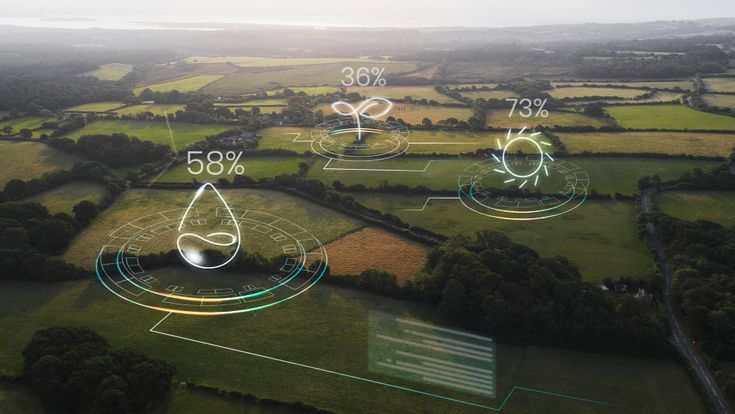
The revolution is ongoing, and the pace of innovation is accelerating. We are moving towards a future of hyper-automation, where robotics and AI will handle even more complex tasks. We will see greater integration of technologies, creating a seamless flow of data from the genome of a seed to the fork of the consumer. The concept of vertical farming and controlled environment agriculture, powered by AI and IoT, will likely play a bigger role in urban food production.
Ultimately, the digital revolution in agriculture is about building resilience. It’s about creating a food system that can sustainably nourish a growing global population in the face of unprecedented environmental challenges. By embracing data and technology, farmers are evolving into highly skilled managers of complex biological and technological systems. They are not just cultivating crops; they are cultivating the future of food.




